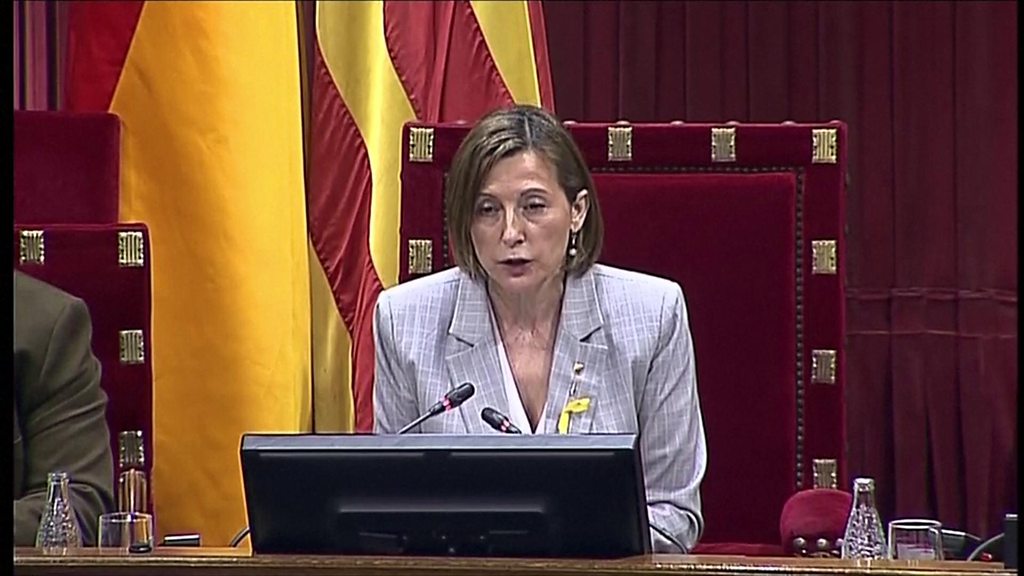The Catalan regional parliament has voted to declare independence from Spain, while the Spanish parliament has approved direct rule over the region.
Catalan MPs backed the motion 70-10 in a ballot boycotted by the opposition.
Spanish Prime Minister Mariano Rajoy had told senators direct rule was needed to return “law, democracy and stability” to Catalonia.
The crisis began when Catalans backed independence in a disputed vote earlier this month.
- What powers does Catalonia have?
- The case for and against independence
- Reality Check: Police violence in Catalonia
The Catalan government said that of the 43% of potential voters who took part in the referendum, 90% were in favour of independence. But Spain’s Constitutional Court had ruled the vote illegal.
What happened in the Catalan parliament?
On Thursday Catalan President Carles Puigdemont opted against declaring independence or calling early elections, instead calling on MPs to decide.
A motion declaring independence was approved on Friday with 70 in favour, 10 against, and two abstentions in the 135-seat chamber.
The measure calls for the transfer of legal powers from Spain to an independent Catalonia.
But the Spanish Constitutional Court is likely to declare it illegal, and key international powers including Germany, the EU and the US back the Spanish position.
Mr Puigdemont has called for supporters to “maintain the momentum” in a peaceful manner.
What will the Spanish government do next?
Soon after the vote at the regional parliament, the Senate – Spain’s upper house – made the unprecedented step of approving measures allowing the Spanish government to impose direct rule over Catalonia.
There were 214 votes in favour and 47 against.
Urging calm, Mr Rajoy said: “Spain is a serious country, it is a great nation and we are not prepared in any way to allow some people to liquidate our constitution.”
He will hold a cabinet meeting shortly to decide what measures to take.
It could include the firing of Catalan leaders, and the Spanish government taking control of the region’s finances, police and publicly owned media.
How did we get here?
After the 1 October referendum, Mr Puigdemont signed a declaration of independence but delayed implementation to allow talks with the Spanish government.
A deadline set by Madrid for him to clarify his intentions came and went, prompting Mr Rajoy to announce plans to impose direct rule.
Catalonia is one of Spain’s richest, most distinctive regions and enjoys a high degree of autonomy.
But many Catalans feel they pay more to Madrid than they get back, and there are historical grievances too, in particular Catalonia’s treatment under the dictatorship of General Franco.
Catalonia in numbers
-
16% of Spain's population live in Catalonia, and it produces:
-
25.6% of Spain's exports
-
19% of Spain's GDP
-
20.7% of foreign investment









